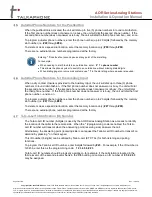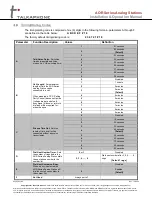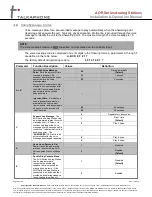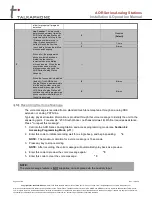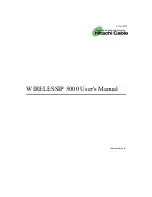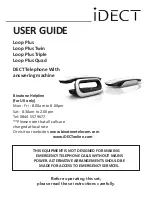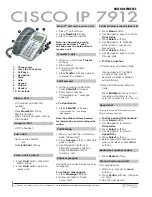
AOR Series Analog Stations
Installation & Operation Manual
Page
26
of
27
Rev. 1/7/2022
Copyright 2021-2022 Talk-A-Phone, LLC
• 7530 North Natchez Avenue • Niles, Illinois 60714 • Phone 773.539.1100 • info@talkaphone.com • www.talkaphone.com.
All prices and specifications are subject to change without notice. Talk-A-Phone, Talkaphone, bAlert, Scream Alert, WEBS, and WEBS Contact are registered trademarks of Talk-A-Phone,
LLC. All rights reserved. All other trademarks mentioned in this document or website are the property of their respective owners and does not imply or indicate any approval, endorsement,
sponsorship, or affiliation with such owners unless such approval, endorsement, sponsorship, or affiliation is expressly indicated.
13. Maintenance
Testing
It is recommended to periodically test the functionality of an AOR Series Analog Station to ensure it is
operational. You should consult your integrator or Talkaphone dealer about the necessity of such
functional tests and their frequency. Optionally, Talk-A-Lert polling software (Model
ETP-TAL
) can be
utilized to verify connectivity and basic functioning of AOR Series Analog Stations on a regular basis.
Cleaning
It is recommended to periodically clean the faceplate surface of the AOR Series Analog Station with a
cleanser or a cleanser and water mixture. If it is safe to use on glass, it is generally considered safe to
use on stainless steel. Wipe the faceplate dry when finished.
Inspect the equipment frequently. If you notice discoloration, tarnish, or water stains, increase the
frequency of your cleanings. You can also try cleaning with borax, soda ash, or a non-abrasive
commercial cleanser and water. Deeper stains may be removed with a magnesium oxide, ammonia,
and water paste. Wipe clean with water, rinse, and dry the faceplate.
Light corrosion or rusting on the faceplate can be removed with a stronger cleaning agent, such as
Simichrome Polish. For stronger corrosion, naval jelly is recommended. To remove or reduce pitting
damage caused by corrosion, mechanical polishing is preferred to chemical cleansing. Scotch-Brite
works well for this purpose. Work only in the direction of the existing grain and never use steel wool.
Please refer to ASTM A-967 and ASTM A-380 guidelines regarding stainless steel passivation and
maintenance.
Preventative Mai
ntenance
For most installations, the stainless steel finish does not require any maintenance to prevent the
occurrence of corrosion. In rare cases (e.g., high humidity environment, exposure to airborne
contaminants or direct contact with certain chemical compounds like salt spray), it may be required to
perform preventative maintenance on a regular basis.
A regular automotive wax can be used to prevent corrosion of the stainless steel. Follow these
directions to reinforce the chromium oxide layer on the faceplate and prevent it from further corrosion:
•
Wet a cleaning pad with fresh water (do not use chlorine water) and apply powered
cleanser;
•
Using gentle pressure, rub stained areas in the same direction of the existing polishing
grain until stains are removed;
•
Rinse with clean water. Use cleaner de-greaser to remove any stains;
•
Thoroughly dry the stainless steel faceplate;
•
Apply a layer of an automotive wax on the faceplate and wait until it dries out to a haze;
•
Buff the wax in with a soft dry cloth until the residue is gone.
IMPORTANT NOTE:
DO NOT
use steel wool, sandpaper, mineral acids, bleach, or chlorine-based cleansers on the
stainless steel surface.



